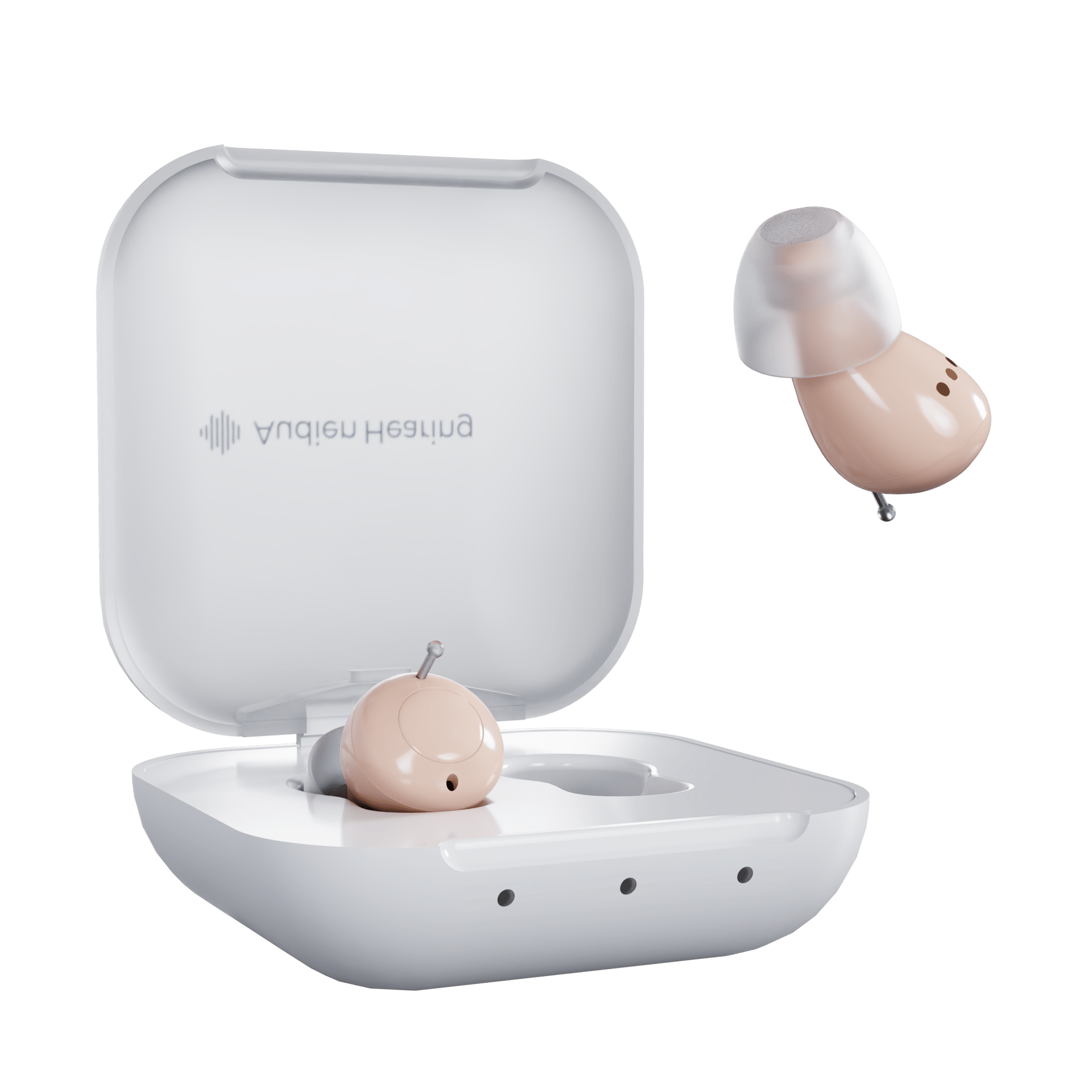“Tinnitus, like dizziness, can be one of the greatest challenges for both patients and doctors. Everyone has different symptoms and everyone can require individualized treatment. The best thing to convey to patients is that the phantom sounds can be managed. It is important to have a full evaluation by an ENT specialist and an audiologist.” - Drew Sutton, MD, Board-Certified Otolaryngologist
Many people associate problems revolving around the ears as ones characterized by a reduced ability to hear sounds.
While hearing loss is a major contributor to hearing problems, The reality is that there are a wide variety of different hearing conditions. Some can make your ears more sensitive to noises, while others can make you hear sounds that aren’t even there.
Tinnitus is a condition that causes an individual to hear sounds that are not actually there in their environment. These phantom sounds have several different causes and many different ways that they present themselves from individual to individual.
Below is a closer look at the different ways tinnitus can sound, how it can differ in duration, different potential causes, as well as the potential ways to get relief.
With the information below, you will be better well-versed in tinnitus and be better equipped to deal with your tinnitus.
How Tinnitus Can Sound

Tinnitus can vary significantly in its presentation from person to person. One of the main ways that tinnitus differs is in the sound that is perceived. Volume, pitch, and sound type appear to all vary from person to person.
Being aware of the different sounds can allow you to be more cognizant and identify tinnitus earlier, which can help you get more effective treatment.
Tea Kettle Whistle
One form of tinnitus that seems to be highly specific is those that experience a sound that sounds like a boiling tea kettle.
Characterized by a high whistle sound, this form of tinnitus can be difficult to live with. Having to hear what sounds like a tea kettle boiling constantly is sure to become a nuisance and begin impacting your day-to-day life.
Pure Tone Ringing
Pure tone ringing is one of the most common forms of tinnitus. With pure tone ringing, people often experience a single note that is constant in volume and pitch. The best illustration of pure tone tinnitus is actually when you are getting your hearing tested.
When your hearing is tested, audiologists use pure tone sounds to determine your auditory acuity. Those with pure tone ringing tinnitus essentially experience one of these tones constantly.
Buzzing
Buzzing is another form of tinnitus that you can get. The buzzing type of tinnitus is often compared to that of hearing the buzzing of an insect. For some people, this form of tinnitus can be terrible, especially if they already dislike insects.
In fact, the buzzing of certain insects like cicadas has even been linked to increased anxiety when they emerge from the ground every decade or so. With buzzing tinnitus, it may be wise to seek care sooner rather than later, especially if you find yourself getting anxiety from the sounds of buzzing.
Roaring
Another form of tinnitus is those that experience roaring. Roaring is most analogous to the sounds you would hear while flying, and they can be difficult to ignore. Many of the same treatment techniques for other forms of tinnitus can also be effective with roaring tinnitus.
Whooshing
Whooshing tinnitus is one form of tinnitus that is closely related to a specific cause. If you have ever heard the sounds of turbulent fluid flow, this closely resembles those with whooshing tinnitus experience.
Whooshing tinnitus is closely connected to a specific kind of tinnitus known as pulsatile tinnitus, and it is caused by turbulent blood flow around the structure of the ears.
Static
Static tinnitus is a form of tinnitus that sounds similar to static on a T.V. or radio. Static tinnitus can vary in tone or volume, but it typically resembles that of a standard static signal you would hear.
Other Tinnitus Presentations

The different sounds possible with tinnitus only represent a small part of the variation in tinnitus. Tinnitus frequency and the specific ear that is affected are other components of tinnitus that can differ from person to person.
Some people have to deal with tinnitus all the time, while others may only deal with it every once in a while. Additionally, some individuals experience tinnitus in one ear, while others may experience it in both ears.
Below is a closer look at tinnitus frequency and presentation and how it can differ from person to person.
Intermittent Tinnitus
Intermittent tinnitus is characterized by tinnitus that appears to be more present one day and other days seems to not be there at all. There is typically some sort of trigger with intermittent tinnitus that exacerbates the tinnitus to a point where it becomes more noticeable.
It can be easier to live with intermittent tinnitus since simply avoiding triggers can allow you to live fairly tinnitus-free.
Continuous Tinnitus
Continuous tinnitus is a form of tinnitus that is constantly present. While you may not pay attention to it as much one day, the relative volume and tone are consistent. Continuous tinnitus is one of the more common forms of tinnitus. Treatments typically revolve around helping other underlying hearing problems or undergoing therapy to try and reduce its impacts on your day-to-day life.
Unilateral Tinnitus
Unilateral tinnitus is a form of tinnitus that only is heard in one ear. Unilateral tinnitus is much less common and can indicate more serious health complications, especially if it appears out of the blue. Unilateral tinnitus typically accompanies other hearing-related problems such as unilateral hearing loss or chronic loud noise exposure to one ear.
Bilateral Tinnitus
Bilateral tinnitus is tinnitus that occurs in both ears. Bilateral tinnitus is much more common than unilateral tinnitus, as many of the proposed mechanisms behind the formation of standard tinnitus have to do more with the brain’s ability to process sounds rather than the sound originating from the ears themselves.
Potential Causes of Tinnitus
As you have most likely gathered by now, tinnitus is a complex problem that many people face. With such a wide variety of different presentations, there is no single determining cause of tinnitus. In fact, the large majority of those with tinnitus cannot pin down the exact cause of the noises they hear.
That being said, there are several common causes of tinnitus, and below is a closer look at a few of them.
Hearing Loss
Hearing loss and tinnitus frequently occur together, and it is believed that the formation of tinnitus follows hearing loss. The proposed reasoning is that as signals become weaker coming from an ear suffering from hearing loss, the brain increases its sensitivity to the signals.
This is thought to help those individuals hear, but the added sensitivity to signals is believed to decrease the threshold to noise perception, resulting in the lack of noise being perceived as a specific tone.
Ear Malformation and Blood Flow
Another potential cause of tinnitus is a malformation or restriction of blood flow in the ear that causes it to hear sounds of turbulent blood flow.
There are blood vessels that flow close to the auditory organs, and when the blood flow is not efficient and free-flowing, it can cause the nearby auditory system to pick it up as sound with each beat of the heart.
This is typically the cause of a specific form of tinnitus known as pulsatile tinnitus, characterized by a rhythmic form of tinnitus that comes and goes. The blood restriction can be caused by either a malformation from birth or can occur over time due to plaque buildup.
Potential Remedies for Tinnitus

Tinnitus is a multifaceted issue that can have a number of different factors that come together that allow it to occur. In many cases, tinnitus is incurable, and treatments mainly focus on symptom mitigation. Below is a closer look at some of the possible ways to remedy tinnitus.
Hearing Aid
Since tinnitus can be caused by hearing loss in some instances, getting hearing aids may help to reduce tinnitus symptoms. Hearing aids, however, can be quite the investment, with some approaching the thousands of dollar price range. Audien is a hearing aid company with a different philosophy that enables patients a more approachable hearing aid in terms of cost with many of the same features.
Sound Masking
Sound masking is the process of playing sounds to drown out unwanted sounds. In the case of tinnitus, this can be incredibly helpful to provide some temporary relief from tinnitus symptoms.
Therapy
Therapy has been shown to be extremely helpful for those with persistent tinnitus. The therapy mainly focuses on changing the relationship and reaction that people have to their tinnitus. With successful therapy, individuals still have tinnitus, but it doesn’t impact day-to-day life.
Conclusion
In summary, tinnitus can sound very different from one person to the next. For some, tinnitus sounds like a whistle, while it may just be a high-pitched tone for others. Regardless of how it sounds, tinnitus can impact your day-to-day life if left untreated. Seeking professional help can get you on the road to managing your tinnitus.
Sources:
Cicadas bugging you? You’re not alone. Read these tips to dial down your anxiety | OSU Med













